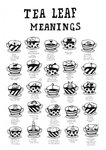Perhaps it depends on what you mean by a pattern.
Exactly, for the purposes of this thread, I take it to mean pin bars, H&S etc.
I think those kinds of patterns are largely BS as they are a product
of the time series they show up on.
A pin bar on a 1 hr chart is not a pinbar on a 4hr or 1500 tick chart for example.
Gann angles is another one - product of the time series chosen.
Basically anything that is dependent on a specific time frame for its
existence is vacuous.
If anyone using them does have success, I'd say its more to do with
trade management, and experience of price action as a filter.
As stand alone methods in isolation they have little to no worth.
In terms of overall patterns, yes they quite clearly exist.
Tick volume footprints.
Time of day - open and close are the obvious ones,
about as rigid a pattern as you will find, same with other static time events.
Correlation patterns, arb in other words, those patterns aren't necessarily
chart based.
Say an ES/YM/NQ/ER2 stat arb basket, AAPL, GOOG could be used as pointers
to the NQ element using VWAP.
So yes its entirely dependent on the types of pattern you use.

